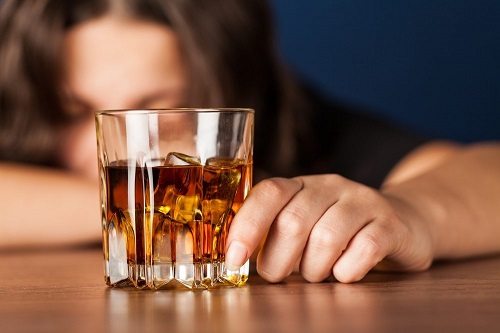Most people know that alcohol abuse and alcoholism can be extremely harmful when left unchecked. The hazards of excessive drinking and alcoholism are well known. An estimated 3 million people die from alcohol each year and alcoholism is one of the leading causes of death in the United States.
The body can only process a little bit of alcohol at a time, so excessive drinking can lead to health problems like liver failure and end in death. Overindulging in alcohol puts a lot of strain on the body and drinking too much too often means that the body can’t handle it and could shut down.
How Alcohol Kills
Alcohol abuse doesn’t just harm drinkers. It can lead to drunk driving deaths, injuries, home fires, and even homicides. Domestic violence is often linked to excessive drinking, too.
Some of the ways that drinking too much can have fatal consequences include:
Long Term Risks and Effects
- Individuals who drink excessively have a higher likelihood of suffering from stroke, cirrhosis of the liver, certain types of cancers as well as immune system problems.
Dependence and Withdrawal Symptoms
- Individuals who are chronic drinkers can develop a severe dependence on alcohol, which can then lead to experiencing potentially dangerous withdrawal symptoms.
Fatal Traffic Accidents and Injuries
- Approximately 30% of all vehicular deaths are attributable to the consumption of alcohol.
- Over 1,800 college students die each year due to accidental injuries.
Alcohol Poisoning
- Acute alcohol poisoning kills over 1,000 people annually.
Fire Fatalities
- More than half of deaths that involve fire also involve alcohol consumption.
Homicide
- Over half of all homicides have excessive drinking as a common element.
The Risks of Alcohol Overdose
 An overdose is different than simply being drunk. Overdoses, when left untreated, can be fatal and are often linked to binge drinking.
An overdose is different than simply being drunk. Overdoses, when left untreated, can be fatal and are often linked to binge drinking.
Young drinkers, men, and people with high alcohol tolerance are all at higher risks of alcohol overdose.
Yet, most people don’t know what to look for when someone they love might be at risk of this potentially fatal side effect.
Some of the causes of an alcohol overdose include:
- When a person drinks more than the body can process safely.
- The liver metabolizes alcohol but can only break down so much at once.
- Drinking for extended periods of time without a break (or binging).
- If alcohol is combined with some other drugs, like pain medications or sleeping pills, it can kill by interfering with the nervous system’s ability to regulate respiration.
Common symptoms of an overdose include nausea, a sudden lowering of body temperature, and unconsciousness. In some cases, an overdose can also include cardiac arrest, hypothermia, or even seizures. One immediate sign that emergency medical help is needed is a low breathing rate of eight breaths or less per minute.
The Dangers of Mixing Alcohol with Other Drugs
The common practice of mixing drinking with prescription drugs or other substances can not only make the drugs less effective but at times could be fatal.
Below are some of the most common drugs people tend to mix with alcohol and the inherent risks these dangerous combinations could present:
- Unfortunately, one of the most common drugs combined with alcohol is Xanax. Drinking while on Xanax can lead to death, as even normal doses of Xanax are dangerous when combined with alcohol. The only way to avoid overdose or death while using either Xanax or alcohol, is not to mix the two at all.
- Heroin and alcohol are both addictive substances which can be lethal in combination. The body cannot cope with the side effects of heroin and alcohol at the same time. Find out what makes this mix so dangerous and what effects the results have on both the brain and body.
- Percocet and alcohol are dangerous because these two chemicals when mixed together can create a potent, lethal cocktail. Percocet and alcohol’s effects are strong but when combined, the effects can decrease breathing and blood pressure which may cause disorientation or even overdose.
- Drinking while using Zoloft can present many negative side effects or even cancel the positive benefits of the Zoloft altogether. The fact is Zoloft’s overall effect may be compromised by mixing in alcohol. Learn more about why Zoloft and alcohol don’t mix.
The Side Effects of Casual Drinking
 However, it’s not only alcoholics and binge drinkers who are at risk. It is assumed that casual or social drinking is much safer, and for the most part it is. A couple of drinks a day, and binge drinking occasionally, is much more tolerable to the body. But that doesn’t mean that there are no side effects to casual drinking. Most drinkers are not aware that drinking more than 14 units of alcohol a week as a matter of routine can cause a variety of long term health issues including cancer and heart attack.
However, it’s not only alcoholics and binge drinkers who are at risk. It is assumed that casual or social drinking is much safer, and for the most part it is. A couple of drinks a day, and binge drinking occasionally, is much more tolerable to the body. But that doesn’t mean that there are no side effects to casual drinking. Most drinkers are not aware that drinking more than 14 units of alcohol a week as a matter of routine can cause a variety of long term health issues including cancer and heart attack.
Casual drinking can have many side effects and it is important to learn the health risks it presents.
Being Dehydrated
- The most immediate side effect of drinking, even casual drinking, is dehydration. Just one night of drinking can put an individual at the risk of being dehydrated. Hangover headaches are the direct result of dehydration, and it affects the entire body and brain’s abilities to function properly.
Different Forms of Heart Disease
- Many years of casual drinking can lead to different forms of heart disease. Heart disease can be defined as any condition that negatively affects heart functioning, and the functioning of blood vessels to the heart. Heart disease can also lead to a heart attack.
Diabetes
- There are several different ways in which alcohol consumption and diabetes are related. If an individual suffers from diabetes then even casual drinking can make it difficult for them to control insulin levels. This is because drinking can lead to low blood sugar. A casual drinker who has diabetes can have difficulty maintaining a healthy level of blood sugar. That makes them more likely to develop diseases related to diabetes such as kidney damage and heart disease. For a casual drinker who doesn’t have diabetes, drinking can lead to fatty liver disease, which actually increases the risk of getting type 2 diabetes.
Gaining Weight
- Weight gain is a possible side effect of casual drinking, which can lead to low blood sugar. Apart from that there are other health effects associated with weight gain, including depression and heart disease.
Nutritional Deficiencies
- When an individual drinks alcohol, it reduces their body’s ability to absorb nutrients. Even in casual drinkers, there can be vitamin and mineral deficiencies. There is a tendency among casual drinkers to either eat less, or eat more carbohydrates, which can lead to nutritional deficiencies as well as weight gain.
It is clear that casual or social drinking is not as safe as it seems, and even just a couple of drinks a few times a week can cause a number of unhealthy side effects. And that’s not taking into account the other dangers of casual drinking such as impaired judgment or negative interactions with medications.
Alcohol Kills Non Drinkers Too
Alcoholism is often referred to as a family disease, since those people who have to live with or deal with the individual who has an alcohol problem, are also affected.
- Over 50% of all domestic violence incidents involve alcohol.
- US Government statistics show that approximately 1,500 women die each year at the hands of their male partners. Additionally, an estimated 6,000 women commit suicide after enduring years of abuse.
Alcoholism is a serious illness which requires supportive services and an individualized treatment approach. Recovery is hard work but you don’t have to do it alone. The Villa can provide you with everything you need to prepare for recovery. Contact us to find out how we can provide resources and tools to help you or your loved one navigate the pathway to recovery and sobriety.

